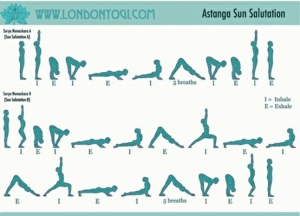The word “yoga” means “coming together”. It refers to the coming together of the individual and the higher being, greater consciousness. Yoga is one of the 6 orthodox systems of Indian Philosophy. As a philosophical system Yoga was collated, coordinated and systematised by Patanjali. The sources are not clear whether he or she was a real person or a group of people or an imaginary personality. The general use is that he was a he and a real person. Patanjali summarised the yoga system in 185 sutras – concise and terse aphorisms. This little book starts with a definition of yoga in the second sutra. So, yoga is “citta vritti nirodhah”, that is “calming the distractions of the mind”. The distractions of the mind need to be calmed in order to achieve the level of meditative clarity to come in unison with supreme being.
As a secular yoga practitioner, I interpret this as “clearing up the path to a better version of myself so that I can observe my present self and work on ways to better myself”. / “to be able to concentrate my mind -that is to shut down the distractions- to clear up the path between my present self and my ideal, better self, in order to discover ways to better myself in a way that I am content with”.
WHAT IS VINYASA?
Yoga achieves this by creating a connection between breath-body-mind through the training of each by pranayama-asana-meditation, respectively.
Reminding us or helping us remember the connection between breath-mind-body. This is called Vinyasa. This word has a few interconnected meanings. Like many Sanskrit words, this is a compound word from the combination of the word Nyasa and Vi. Nyasa denotes “to place” and vi denotes “in a special way.” Like many Sanskrit words, vinyasa is a term that has many meanings. To begin with the more literal meaning, according to Monier-Williams dictionary, the sanskrit word in its general sense, means “putting or placing down; a deposit; putting on (ornaments); movement, position (of limbs), attitude; arrangement, disposition, order; scattering, spreading out; establishment, foundation; putting together, connecting (e.g., words), composition (of literary works); exhibition, display; the utterance of words of despair; assemblage, collection; any site or receptacle on or in which anything is deposited.”
- Simply put, vinyasa means “movement between poses in yoga, typically accompanied by regulated breathing.” – the linking of body movement with breath.
- It is also a specific sequence of postures that is used as transition from one posture to the other, therefore “interlinking postures to form a continuous flow. It creates a movement meditation that reveals all forms as being impermanent and for this reason are not held on to.1” The term ‘taking a vinyasa’ refers to the sequence of SN-A or short/half version of SN-A, i.e. ChaturangaDandasana-UpDog-DownDog.
- A third definition of Vinyasa is “setting an intention for one’s personal yoga practice and taking the necessary steps toward reaching that goal -vinyasa krama 2”
- And lastly, it is a type of yoga that puts the idea of Vinyasa and its several meanings at its centre. It is sometimes called Vinyasa Flow. Historically, Vinyasa Flow comes after Ashtanga Vinyasa Yoga. Unlike Ashtanga Vinyasa yoga, where the same set sequence is repeated in each class, in vinyasa flow classes, the sequence is designed by the teacher.
Some basic and simple vinyasa flows that are also known as sun salutations. Sun salutations are perfect for warming up the body.

Classical Sun Salutation

Sun Salutation A – Surya Namaskara A
Sun Salutation B – Surya Namaskara B
OBS! Remember to step into plank, then lower yourself down through a half-chaturanga by put the knees down first and then lift the head up for a backbend of your choice. After your backbend, take table top to inhale before you exhale into Downward facing dog.
OBS!! In SN-B, instead of warrior A, your other options are a low lunge with the back knee on the floor or a high/crescent lunge where the back leg is straight(ish) and off of the floor.
KEY THINGS TO REMEMBER:
1. Inhale and step into plank & Exhale and lower yourself down gently, knees first, followed by half-chaturanga.
2. Downward Facing Dog (Adho Mukha Svanasana) is an inverted V; not a plank, not an inverted U. Spread your fingers and feel the suction under the palms. Micro bend in the knees but lift the hips, tail and all up.
3. Keep breathing no matter what unless you can’t, then rest in child’s pose or any other pose that you’re comfortable in. Also, remember to rest when you feel too tired to follow the flow.
4. The more you practice the more fun it will be, stick to your yoga practice. 🙂
namaste,
e.
- Maehle, Gregor (2007). Ashtanga Yoga: Practice and Philosophy (Paperback). New World Library. ISBN 1-57731-606-1 & ISBN 978-1-57731-606-0, p.294
- http://yogachicago.com/2014/03/the-many-nuances-of-vinyasa/

Very nice article, it contains all information how to keep our body healthy and fit by doing yoga